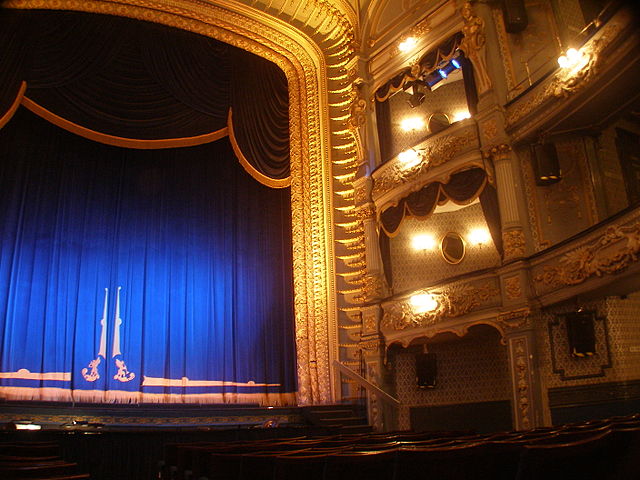 The prestigious Royal Ballet School announced the appointment of Christopher Powney as their Artistic Director Designate last month, who is due to step into the role in April 2014. The current Artistic Director, Gailene Stock, is sadly unwell, and will retire from her post on 31 August 2014. As a result, the summer term of 2014 will see Powney taking over the running of the School after a transitional period. Jay Jolley will continue in the role of Acting Director and will lead the School’s artistic programmes into the 2013/14 academic year.
The prestigious Royal Ballet School announced the appointment of Christopher Powney as their Artistic Director Designate last month, who is due to step into the role in April 2014. The current Artistic Director, Gailene Stock, is sadly unwell, and will retire from her post on 31 August 2014. As a result, the summer term of 2014 will see Powney taking over the running of the School after a transitional period. Jay Jolley will continue in the role of Acting Director and will lead the School’s artistic programmes into the 2013/14 academic year.
As one of the top classical dance training centres in the world, the Royal Ballet School has flourished under Stock and is hoped to continue this journey under Powney, selected unanimously to take the school further forward as the driving force behind exceptionally talented and motivated young dancers.
Powney, a former teacher at The Royal Ballet Upper School, is currently Artistic Director of the Dutch National Ballet Academy and has danced himself with Northern Ballet, English National Ballet and Ballet Rambert, as it was then known. During his career he has worked with some of the world’s leading artists, such as Rudolf Nureyev, Jiri Kylian, Lynn Seymour, Christopher Bruce, Twyla Tharp, Frederick Franklin, and Glen Tetley.
Powney later went on to focus on teaching, having qualified with The Royal Ballet School’s Professional Dancers Teachers’ Course. He was Assistant Artistic Director of the Central School of Ballet’s graduate touring company, and in 2000, he joined the teaching staff of The Royal Ballet Upper School. 2006 saw him invited to take on the position of graduate teacher with the dance department of the Royal Conservatoire in The Hague. Powney has also been a member of the board for the British Association of Performing Arts Medicine and was a jury member of the 2011 Prix de Lausanne competition.

 The theatre is a world of mystique, intrigue and illusion, serving to delight and entertain its audience with spectacle, no matter how otherworldly. This tradition of theatre is still upheld in many venues and arts spaces across the country and even across the world, but equally much of the previous spectacle has developed to accommodate the twenty first century. Productions have alternative intents, aiming to shock and provoke audiences rather than provide a successful model of theatre which has been proven to work.
The theatre is a world of mystique, intrigue and illusion, serving to delight and entertain its audience with spectacle, no matter how otherworldly. This tradition of theatre is still upheld in many venues and arts spaces across the country and even across the world, but equally much of the previous spectacle has developed to accommodate the twenty first century. Productions have alternative intents, aiming to shock and provoke audiences rather than provide a successful model of theatre which has been proven to work.